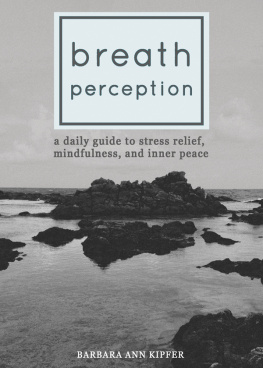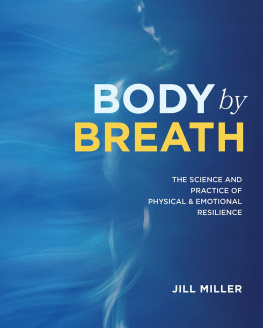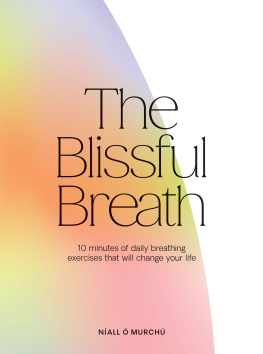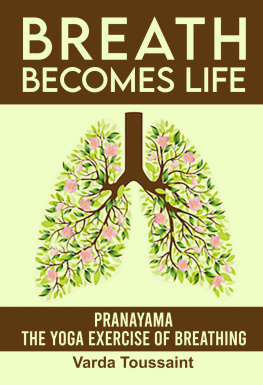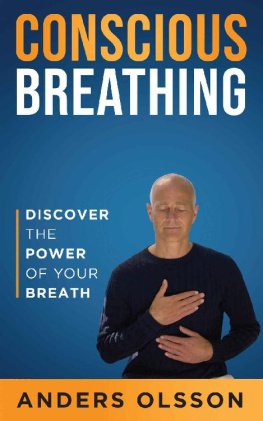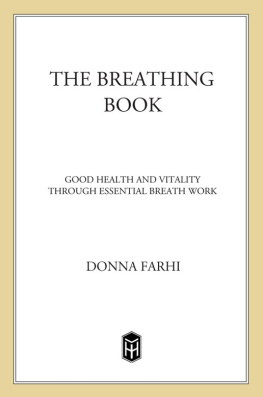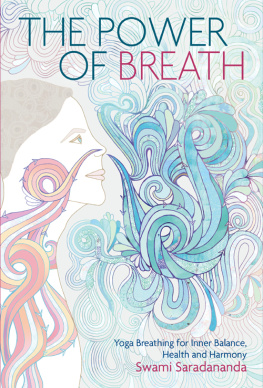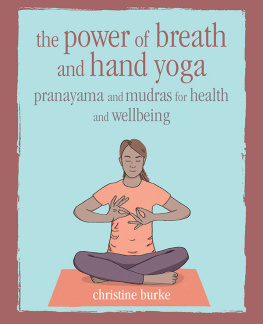BREATH PERCEPTION
A Daily Guide to Stress Relief, Mindfulness,
and Inner Peace
Barbara Ann Kipfer

Copyright 2014 by Barbara Ann Kipfer
All rights reserved. No part of this book may be reproduced in any manner without the express written consent of the publisher, except in the case of brief excerpts in critical reviews or articles. All inquiries should be addressed to Helios Press, 307 West 36th Street, 11th Floor, New York, NY 10018.
Helios Press books may be purchased in bulk at special discounts for sales promotion, corporate gifts, fund-raising, or educational purposes. Special editions can also be created to specifications. For details, contact the Special Sales Department, Helios Press, 307 West 36th Street, 11th Floor, New York, NY 10018 or .
Helios Press is an imprint of Skyhorse Publishing, Inc., a Delaware corporation.
Visit our website at www.skyhorsepublishing.com.
10 9 8 7 6 5 4 3 2 1
Library of Congress Cataloging-in-Publication Data is available on file.
Interior design by Abigail Gehring
Cover design by Keir Magoulas
Photo credits:
Cover: Keir Magoulas
Author: pages 10, 18, 25, 53, 112, 180, 188, 204, 212, 228, 236, 244, 252, 260, 268, 276, 284, 292, 300
Keir Magoulas: pages 36, 42, 62, 70, 78, 85, 95, 121, 130, 139, 172
James Hatton: pages 104, 220
Kyle Kipfer: page 196
ISBN: 978-1-62914-368-2
Ebook ISBN: 978-1-62914-883-0
Printed in China
INTRODUCTION
I n a fast-paced, technologically driven society, many of us forget to find time to just breathe. Breath Perception encourages its readers to slow down and become more mindful. By attaining self-awareness when taking more than 14,000 breaths each day, individuals will soon achieve greater happiness.
Breath Perception offers a guide for understanding the breath and implementing it as an instrument for physical and mental health benefits such as stress relief, higher energy levels, better sleep patterns, improved concentration, and an increased metabolism. In order to heighten the readers consciousness of breathing, there are 262 simple exercises as well as 104 pieces of wisdom that cover topics ranging from acceptance to Zen. By introducing each technique in a step-by-step manner, Breath Perception is easy to follow and serves as a companion to mental, physical, and spiritual development.
The breath is always with you and always free, but only in the past few years have we started to learn its importance as a mindfulness tool, a concentration help, a meditation focus, and a center of health-giving possibilities. In a similar way, a smile is just a moment awayalso free and always possible. We are often reminded by the ubiquitous Thch Nht Hnh that smiling and breathing go together. The breath has many lessons to teach us and we are starting to listen. The smile has many gifts to give.
Breath Perception is your companion to understanding the breath and using it as a tool to improve your physical and mental health. Partly because we take the breath for granted and do not work with it, we are somewhat unaware of the possibilities to establish proper breathing techniques to address specific needs, such as reducing stress, changing metabolism, and increasing our supply of energy.
HEALTH AND BREATHING
Breathing is absolutely necessary for animal (and plant) life, but we dont have to think about doing it. Our respiratory system automatically breathes in oxygen from the air, circulates it in the body for burning the food you eat, and then breathes out the carbon dioxide produced. The lungs are the holding area for the oxygen and they release oxygen into the blood vessels. Adults breathe in and out an average of 15 to 20 times per minute, slower when they are sleeping or resting; children may breathe a bit faster than adults. But is that all we need to know?
While automatic breath allows us to survive, we all have acquired unconscious bad habits that restrict or distort the breath, usually as reactions to stress. Breathing affects all bodily systems and even affects sleeping (apnea and snoring), memory and concentration, and energy.
Deep breathing has genuine medical benefits. Slowed, focused breathing can reverse the damaging effects of the fight-or-flight hormones that flood the body when you are anxious. Adrenaline and noradrenaline increase heart rate and blood pressure and generate destructive free radicals in the body.
But with each long, deliberate inhale and exhale, you break the train of everyday thought, the fear and the stress of living.
The result is less secretion of stress hormones and more secretion of nitric oxide, which opens the blood vessels, lowering blood pressure. At the same time, metabolism slows down, leading to less free-radical production.
Breath Perception can help you improve the quality of your breathing and even control the state of your breathing. This book has hundreds of alternatives to complicated strategies to address stress, lack of energy, loss of concentration, and poor quality of sleep. You can even address your metabolism and weight through a variety of fairly simple breathing exercises. How? By increasing the amount of oxygen you take in, you help yourself release carbon dioxide and hydrogen more efficiently. This alone reduces the storage of excess fat.
Breath Perception addresses the growing interest in the relationship of breathing to mental, physical, and spiritual development. As you use this book to learn how to sense inner energies and structures of your mind and body, you will make gains in spiritual development and even healing.
BREATHING PROPERLY
Many people do not breathe correctly. Knowing how to take a full, deep breath is a true life skill. A full breath cycle spreads life-giving oxygen throughout the body, gets rid of waste gasses like carbon dioxide, and stimulates the spine and internal organs.
Many of us are chest breathers, meaning were accustomed to an unhealthy pattern of initiating the breath from the chest. When you fall into a pattern of isolated upper-chest breathing, you overuse muscles in the neck and upper body and underuse the diaphragm. During heavy exercise and in emergency situations, you need those muscles to supplement the diaphragm by getting more air to the lungs. Unlike the diaphragm, the muscles of the neck and upper body tire more easily, leaving you anxious and fatigued.
One of the first steps in learning to breathe well is to learn diaphragmatic deep breathing. When you breathe in, the diaphragm contracts and flattens downward creating a vacuum that draws in air. When you exhale, the diaphragm returns to its dome shape, pushing air out of the body.
Once you know how to get your diaphragm working for you, you will find that diaphragmatic breathing is both energizing and relaxing. It is the way a truly efficient body breathes throughout life. Diaphragmatic breathing activates the upper torso yet creates a full, deep pattern of breath.
Lying on your back with your knees bent or straight, put your hands on your lower ribs so that the tips of the middle fingers touch each other at the end of an exhalation. Your shoulders should be relaxed and dropped away from your ears. When you breathe in, try not to let it affect your shoulders. You want your shoulders to stay down and relaxed.
Your spine is long, a neutral spine, a natural position of the spine that allows the curves of the spine to be present. If you are sitting, feel that your weight is falling directly down through your sitting bones and your head is floating up toward the sky. Your throat is open and relaxed.
Next page
